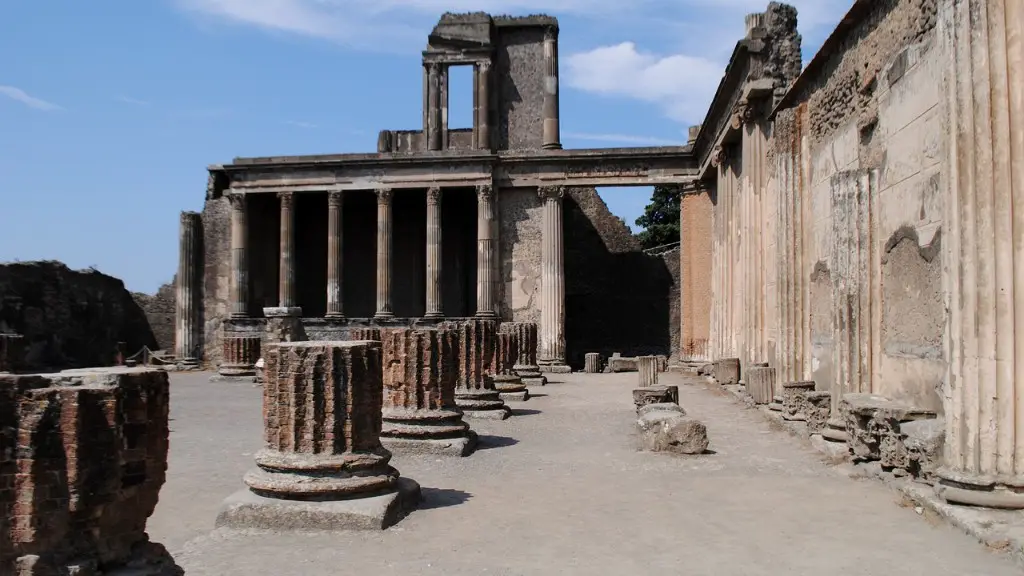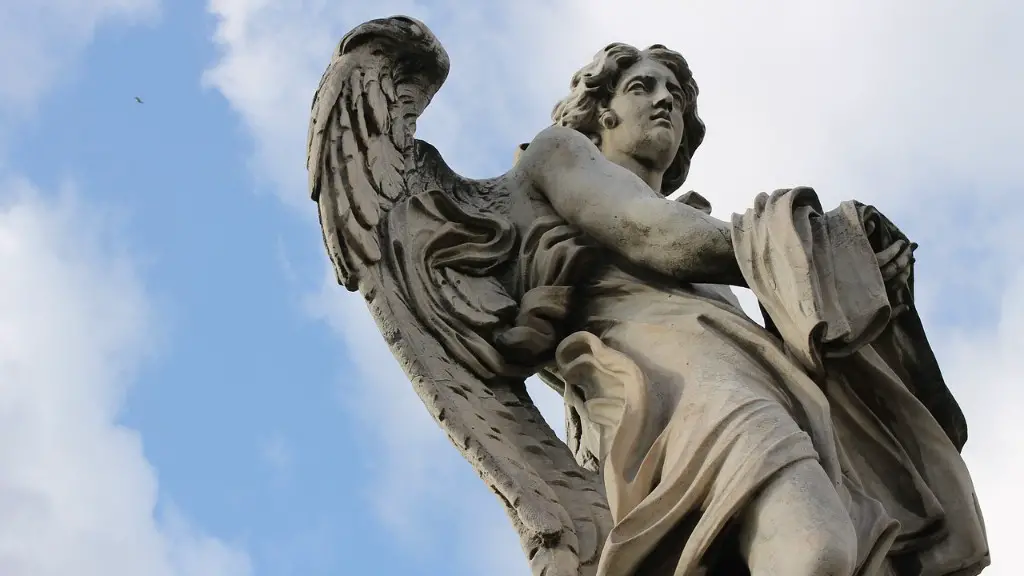Background Information
Apollo is an important figure in Roman mythology. He is the god of light, truth, healing, prophecy, music, art, and poetry. Apollo was one of the most important gods to the Romans, and his importance to the Romans echoed throughout history.
The name Apollo is of Indo-European origin and it means “exalted one.” Apollo was the son of Zeus and Leto and was born on the Greek island of Delos. He was the twin brother of Artemis and the uncle of the hunter Orion. He was one of the Twelve Olympians, and he often took part in the festivals of the gods.
Apollo is usually portrayed as a handsome young man, often sporting a laurel wreath and a quiver of arrows.
Role in Ancient Rome
In ancient Rome, Apollo was the god of oracles and prophecy. He was associated with physical and mental cures, and was said to send his arrows to cause plagues and illnesses. He was also a god of healing and could cure any illness. He could also bestow fortune and fertility on the land.
Apollo was the god of music, song, and dance, and the Roman aristocracy was often seen playing music and performing religious ceremonies in his honor. He was closely associated with young men going to war, and was the patron of soldiers.
Apollo was closely associated with the Roman occupations of divination, prophecy, and dreams. He was the god of truth, which is why the Romans built a temple to him near the Forum, where all public speeches were given.
His relationship with the Romans
The Roman people had a strong relationship with Apollo. His worship was widespread throughout the Empire, and the Romans honored him in festivals and ceremonies. In addition, Apollo’s temple in Rome was one of the most important ones in the city, and it was said to have the power to predict the future.
Apollo was especially popular with the upper classes of Rome. He was often identified with the younger brother of Romulus, Remus, and was seen as a symbol of his heroic nature. The Roman Emperor Augustus was said to be a follower of Apollo, and dedicated a temple to him in 28 BC.
Religious Significance
Apollo had strong religious significance in Roman mythology. He was often identified with the sun god, Sol, and was said to be a central part of the pantheon of gods. He was seen as the god who could bring prosperity and abundance, as well as justice and law.
Apollo’s temple in Rome was known for its oracles, and the site remains an important place of study for scholars of ancient mythology and religion. The renowned Oracle of Delphi was said to be under the control of Apollo and was an important spiritual center in the ancient world.
Symbols and Rituals
Apollo was often associated with certain symbols and rituals. He was often depicted with a laurel wreath, a symbol of knowledge and wisdom, and with a quiver of arrows, a symbol of strength and protection. In addition, the Delphic Oracle was often identified with Apollo, as was the omphalos stone, a symbol of the center of the world and of the god of healing.
The Romans also honored Apollo with various rituals and festivals. The most important of these were the Ludi Plebeii, or Plebeian Games, which were held in his honor. Other festivals included the Bacchanalia and the Convivium Sacrorum, both of which were celebrations that honored Apollo’s divine power and might.
Statues and Art
Apollo was often the subject of statues and artwork in ancient Rome. Statues of him could be found in many temples and public spaces, and he was often depicted as a youth or young man, wearing laurel wreaths, holding a lyre, or riding a chariot drawn by swans or horses.
In art, Apollo was usually represented as the perfect example of form and beauty, usually in classical settings. He often appeared alongside other gods, such as his sister Artemis and his mother Leto, and was one of the favorite subjects of classical Roman painters and sculptors.
Influence Today
Despite the passing of time, Apollo remains an important figure in Roman mythology. He continues to influence art and literature today, and many of his symbols and rituals are still being practiced. His legacy has endured and he is seen as a messenger of hope and healing, a figure of knowledge and wisdom, and a symbol of justice and law.
Symbology in Art and Literature
Apollo is still honored in modern art and literature. Many authors and poets continue to use him as a character in their work, often portraying him as a figure of strength, courage, and victory. He also appears in many works of visual art, from paintings to photography and sculptures.
Apollo’s symbols are still ubiquitous in modern culture as well, often appearing as logos for sports teams, clothing brands, and other organizations. His laurel wreath and lyre are still used to represent knowledge and wisdom, strength and beauty, and music and poetry.
Influence on Nature and Science
Apollo’s influence can still be seen in the natural world. Many plant species, including the laurel tree, have been named after him, as have several astronomical objects such as the Apollonids and the Apollo asteroid belt. He is even still remembered in modern medicine, as many drugs are still named after the god of healing.
Apollo continues to be a source of inspiration in science as well. He is remembered in the fields of astronomy and physics, with many discoveries and theories being named in his honor. In addition, Apollo’s contributions to mathematics and engineering continue to be remembered and studied.
Conclusion
Apollo continues to be an important figure in Roman mythology and culture today. His symbols and rituals are still used in art and literature, and his influence on the natural world and science is still felt today. Despite the passing of time, Apollo remains a powerful source of inspiration and knowledge, and his legacy continues to shape our understanding of the world.


